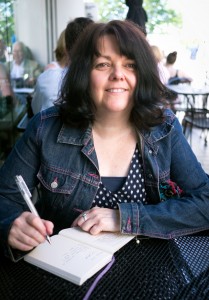Starting to tell a story – the bones
Telling a traditional myth or fairytale without the support of a book, can feel like a risk. Which bits should you remember? How? And why?
Traditional stories are like prototype patterns, or the bones of a skeleton. The same story patterns have been woven and re-woven for generations. Each teller making a new version from the old story bones. Each generation interpreting the elements of the pattern in their own way. Traditional stories have linear structures, led by action and consequential events, with a clear beginning, middle, and end. Some stories have repeating sections, like musical choruses, that invite the audience to join in. This is what you need to reveal, and work with.
Start with a story you already know. Well known bed-time stories such as Little Red Riding Hood or The Three Bears are tales that most of us half-remember. You might want to stitch fragments of different stories together. Or weave your own memories and experiences into the traditional material. This creative process gradually brings the story into the present, giving it meaning and relevance. Find out what you want to say with the story, and how you are going to say it, and you are on the way to bringing the old bones back to life. And this is what makes your version unique.
Starting to tell a story
Breaking down to the bones: Choose a traditional story (have a look at my post about finding a story). Try and find another version of the tale, this will help expand your sense of the story. Read through both versions. Choose one version, and note down the most important things that happen. Strip the story back to its bones. Extract the plot away from the language that the story has been written down in. Make a simple list of the important plot events. Then do the same with the other version. You can add together plot elements from both versions.
Rough tell: Tell the story to a friend. Let it be rough and ready so that you allow space for changes to happen.
Skeletons: Reduce your story to a list of 9 words, 9 essential words that encapsulate the whole story. Reduce your list to 7 words, and then 3 words. Finally, write one sentence about what you think the story means.
Telling: Round the table, in the pub, while doing the washing up, walking, in bed, tell your story… tell, tell, tell … Let it unfold.
Changing: Think about how the story has changed. What other changes do you want to make – location, gender of characters, objects, images? What about the ending – does that need adjustment? What can you add? What could you take away? Does the story feel as if it is your’s now?


Loretta P Vitek
3/7/2012 Hello! This is a wonderful find! As a lover of folktales I often start with a tale I like and follow the steps you have so consisely set out. I love the way you have done this! And I love the fact that you are encouraging others to read and tell folktales as they are such a marvelous source of culture heritage and wisdom. Wonderful to see a teller of like mind! Loretta – DragonStory
Sally Pomme
Thank you Loretta for your kind words!